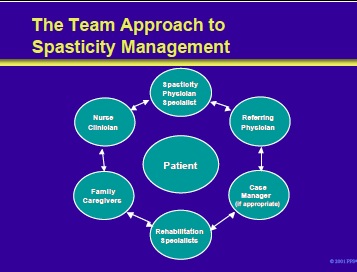Article Index
Cerebral palsy is a group of disorders of motion and posture. It may be due to prenatal, perinatal, or postnatal disorders. Prior to initiation of therapy, the child with CP should be carefully evaluated by a team of specialists including neurologists, orthopedic surgeons, physiatrists, pediatricians, occupational therapists, physical therapists and speech pathologists.
The examination should include tests of active and passive range of motion. In addition, one or more standardized tests of function and disability should be included to gauge the success of the therapeutic interventions. Therapeutic options in the child with cerebral palsy and spasticity include pharmacotherapy, rehabilitation therapy and surgical interventions (orthopedic and neurosurgical).
Pharmacological agents can be used to modulate the manifestations of generalized spasticity.
Neurolytics (eg, phenol) and chemodenervation with BTX offer the opportunity to specifically target spastic muscles and improve functional status.
Surgical interventions can correct anatomic abnormalities resulting from spasticity and interrupt neuroanatomical pathways that contribute to the clinical manifestations.
Rehabilitation management in the child with cerebral palsy is a tool to increase motor control, improve function in activities of daily living and improve quality of life. The role of some alternative medical approaches in the treatment of spasticity is intriguing but lacks a clear evidence base in most instances.
The team approach to the management of spasticity in children with cerebral palsy is centered about the patient.
Core team members include:
- Spasticity physician specialists
- Referring physician
- Rehabilitation specialists
- Family/caregivers
- Nurse clinicians
- Case manager (if appropriate)
- See Next section Management of spasticity in cerebral palsy Part XII Case Studies
